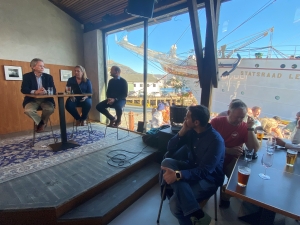High tech equipment collecting data beneath the waves
Wave, current, sonar and camera equipment has been deployed underwater to allow researchers to track sediment flow in and around Cockburn Sound as part of a project which is expected to improve sand nourishment.
Research Fellow Dr Michael Cuttler, from The University of Western Australia’s Oceans Institute, said the research team had set up the high-tech instrument suites during dive trips to three sites.
“At each site, we have the same instrument packages which are designed to measure sediment transport,” Dr Cuttler said.
“They include acoustic instruments to measure waves and currents, and a three-dimensional scanning sonar and custom camera system to map and track seabed morphology.
“The instruments take measurements throughout the day and have already captured significant storm events this winter.”
The equipment is mounted on frames that are attached to steel poles which are fixed to the sea floor.
Dr Cuttler said the systems work to track how and where the sediment moves.
“A lot of our coastal processes work is focused on understanding the beach dynamics – are they accreting or eroding and under what conditions,” Dr Cuttler said.
Dr Cuttler said one of the key knowledge gaps researchers had been trying to fill was sediment transport from the offshore source to the beach.
“Some of the applications for this work is understanding the potential beneficial reuse of dredge material,” Dr Cuttler said.
“So, if they have excess material and want to use it for beach nourishment, where would be the best place to put it and then how long could we expect for that material to move onshore to act as sediment nourishment for the beach.
“One thought is that if you can understand the sediment transport pathways, you can optimise that nourishment, so it continually feeds the beach using natural processes.”
The Coastal Processes project, led by UWA’s Dr Jeff Hansen, is part of the WAMSI Westport Marine Science Program.
The equipment has been deployed three times since the start of the year during different seasons and a final deployment is planned for early 2024.

